The Manufacture of Commercial Black Powder
Anyone interested in rockets is usually curious to know how commercial black powder is made, so I’m starting this discussion with a brief description of the process that I’ve condensed from a topic in The Chemistry of Powder’and Explosives by T.L. Davis. It goes approximately as follows.
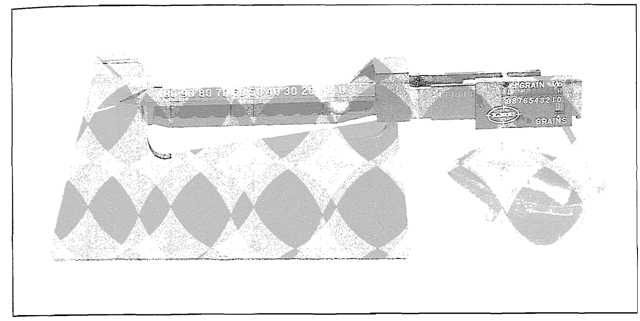
Figure 3-7. A reloading scale is very accurate, but its capacity is limited to 50 or 100 grams. It is suitable only for weighing ver\ small amounts of chemical.
225 pounds of potassium nitrate. 45 pounds of charcoal, and 30 pounds of sulfur are crudely mixed in a large, rotating barrel, then dampened with water, or stirred into a thick hot water solution, and spread on the floor to cool and dry. The resultant, damp mass is placed in a large, donut-shaped channel, and crushed for 3 hours under two. revolving, ten ton. iron wheels. This thick, damp paste, called “clinker”, or “wheel cake”, is hydraulically pressed at 1.200 pounds per square inch between heavy aluminum plates, resulting in a series of “press cakes” about 2 feet square and 3/4 of an inch thick.
The press cakes are cracked and granulated between crushing rollers in a device called a “corning mill”. The results are sieved, dried, and rounded by tumbling again in a wooden barrel with a small amount of graphite to blacken and polish the grains. The finished product is then separated into different grain sizes, and packaged for sale. As the corning mill operates, it generates a by-product of fine, black powder dust, which is collected, packaged, and sold separately as the “meal powder” used in fireworks.
Can I use a Mortar and Pestle?
The equipment needed to do this is beyond the means of an amateur, and when people read about it. they often ask if they can accomplish the same thing with a mortar and pestle. The answer is no. A mortar and pestle (Figure 3-8 ) is a small, hand operated device. To mix even an ounce of material thoroughly enough would take at least an hour of meticulous, hand grinding. Also, it is absolutely vital that the consistency and burn rate of your propellants be identical from batch to batch. Because a mortar and pestle is worked by hand, it is impossible to achieve consistent results.
Can I use a Blender?
People also ask if they can powder the chemicals in a blender (Figure 3-9). and again the answer is no. In the process of developing the propellants for my first topic. I experimented extensively with blenders. Blenders are designed to work with liquids, and not dry powders. The blades that do the work are mounted on a shaft that fits through a bearing in the bottom of the blender jar. Liquids lubricate the bearing, but dry powders are abrasive, and quickly destroy the bearing. Also, a blender pulls the liquid down through the center of the blade assembly. Then it forces it up the sides of the jar in a continual donut-shaped cycle. Long before a chemical is sufficiently powdered to be useful it begins sticking to the sides of the jar. After a few minutes everything sticks to the jar while the blades spin uselessly in open air. You can turn the blender off. reach down with a stick, poke the material carefully back down into the blades, and turn the blender back on. But within seconds the powder is sticking again. If you repeat this maneuver several dozen times, you’ll end up with a few ounces of something that looks usable. But despite its appearance, its quality and grain size will be inconsistent from batch to batch, and it will therefore be useless for making a rocket propellant.
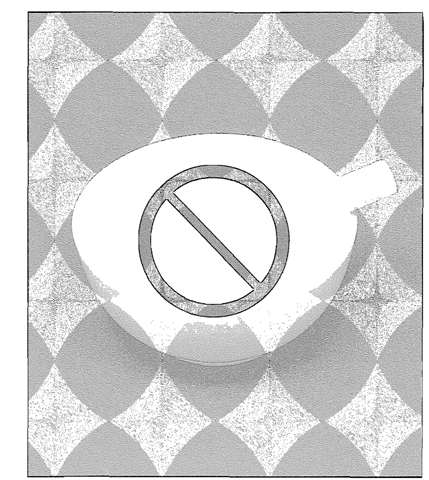
Figure 3-8. A mortar and pestal is not suitable for mixing rocket propellant.
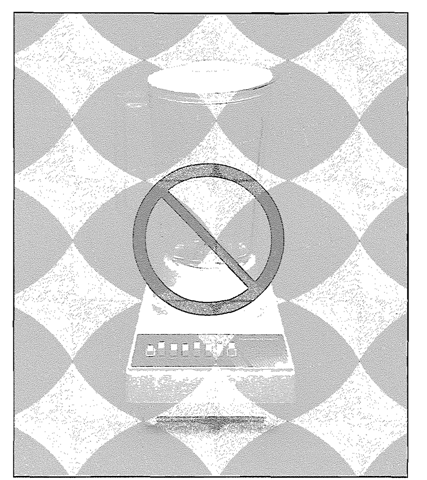
Figure 3-9. A kitchen blender is not suitable for mixing rocket propellant.
If you do experiment with a blender, never use it for mixing chemicals together. Use it only for powdering the individual ingredients, and keep a supply of spare bearings and blade assemblies on hand to replace the ones that wear out.
WARNING! NEVER USE A BLENDER TO MIX PROPELLANT
CHEMICALS TOGETHER! THE FRICTION BETWEEN THE DRY CHEMICALS AND THE BLENDER’S MOVING PARTS WILL GENERATE ENOUGH HEAT TO IGNITE THE PROPELLANT, AND THE BLENDER WILL EXPLODE!
Ball Mills and Rock Tumblers
A ball mill is ajar with a tight fitting lid. partially filled with metal or ceramic pellets, and laid on its side on a motorized base. As the jar revolves, the pellets inside the jar tumble over one another. If you add a mixture of dry chemicals to the jar. the tumbling pellets will grind them to a powder, and mix them together. Ball mills come in many sizes ranging from the tiny mills that powder pharmaceuticals to the giant mills that crush metal ores in the mining industry.
Before World War II ball mills were strictly industrial tools and were far too expensive for the hobby market. After The War a dramatic increase in leisure time resulted in the birth of many new hobbies including the hobby of rock collecting. Since many of the new-found rocks were of near-gem quality, the collectors (aka “rock hounds”) started making jewelry out of them, and by 1955 a new industry had evolved to supply the necessary tools. When the tool makers realized that a ball mill could be used to polish these stones, they developed an inexpensive mill called a rock tumbler that sells on the hobby market for 1/4 to 1/10 the price of an industrial mill.
The burn rate of a powdered propellant is partially determined by how thoroughly it is mixed, and I’ve already emphasized that the burn rate has to remain constant from batch to batch. A rock tumbler’s electric motor turns at a fixed and constant
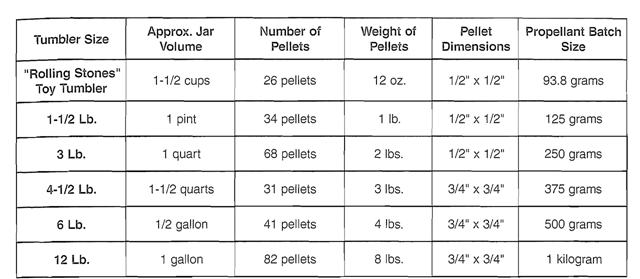
Figure 3-10. Comparison chart for rock tumblers. This chart lists the approximate jar volume, the recommended size and number of milling pellets, the weight of the pellets, and the size of the propellant batch that each machine will make.
rate, so the jar containing the chemicals makes an exact number of revolutions every hour. Assuming that all other parameters are fixed, if you mix two batches of propellant in a rock tumbler, and run each batch for the same length of time, the burn rates of both will be the same. A rock tumbler is therefore ideal for making powdered rocket propellant. and with the exception of the KS propellant. all the propellants in this topic should be made in a rock tumbler.
There are many brands on the market, but because of their low price, their good engineering, and their solid rubber jars. I like the ones made by Lortone Inc.. 2856 N.W. Market St.. Seattle. WA 98107. As of this writing I’ve used three of their tumblers for 12 years, and I’ve run each one for at least a thousand hours without a breakdown. I like them so well that, at least for now. my company. The Teleflite Corporation, features them exclusively in its catalogue of rocket making supplies. Of course as time passes, circumstances might change, but as of the year. 2004. you can order a Lortone tumbler from Teleflite’s website at www.teleflite.com. or www.amateur-rocketry.com.
To find a Lortone tumbler where you live, look in The Yellow Pages under LAPIDARIES. LAPIDARY EQUIPMENT, or ROCK SHOPS. Or contact Lortone. and ask them for the name and phone number of the nearest dealer. Should Lortone ever go out of business, there are many other brands. If you can’t find a “rock shop”, check with department stores and toy stores. For used machines, try the Internet auction sites like www.ebay.com.
Rock tumblers come in many sizes, and the rock-hobby industry ranks them according to how many pounds of gemstones they can process. The dealers who sell them call them “3 pound tumblers”. “12 pound tumblers”, etc. But because you want to know how much rocket propellant a tumbler will make. I’ve drawn up the chart in Figure 3-10 that compares tumbler “poundage” with jar volume and propellant production for the most popular sizes. Figure 3-11 shows two of the tumblers made by Lortone. and Figure 3-12 is a photo of a small but usable machine that I bought at Toys “R” Us.
How Big a Tumbler Should I Buy?
A half pound of propellant will make eight D motors, so a 3 pound tumbler with a 1 quart jar is sufficient for making anything up to a D. If you want to make bigger motors, you’ll need a bigger machine. A G motor (including the time delay) takes 5 to 6 ounces of propellant. With two pounds of propellant. you can make 5 or 6 Gs. so a 12 pound tumbler with a one gallon jar would then be a good choice.
Of course the KS propellant is mixed by hand, and you can powder the potassium nitrate by precipitation with alcohol (topic 7). My best advice is to read this topic first, decide which motors you’re going to make, and then buy a tumbler that meets your needs.
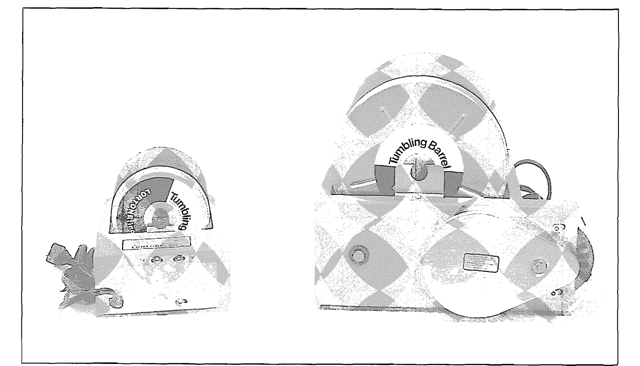
Figure 3-11. Two rock tumblers made by Lortoue Inc. of Seattle. WA. The Model 3A (on the left) makes 250 grams, of propellant per batch. The Model OT-12 (on the right) makes 1 kilogram.
Setting up a Powder Mill
Important note. Beginning with this page. I’ll talk about rock tumblers strictly in terms of their ability to process powdered rocket propellant. So from this point on I’ll refer to all rock tumblers as “powder mills.” Experience has taught me that to thoroughly powder and thoroughly mix the chemicals, the milling pellets have to be heavy. And they also have to be hard. so that they don’t abrade away and contaminate the finished product.
And especially important in this case, the pellets must be non-sparking. A spark generated inside the mill will ignite the propellant, and cause the mill to explode!
For making the pellets, metal is an obvious choice, but you can’t use iron or steel, because things made of iron and steel generate sparks when struck together. Copper works, but it’s very soft, and it’s hard to find in barstock form. Aluminum is too light, and lead is so soft that it quickly grinds away and contaminates the finished propellant. In the presence of the propellant’s oxidizer, the powdered lead turns to lead oxide. Lead oxide is toxic. Your tools, your shop, your clothes, and your rocket motors’ exhaust will be contaminated with lead oxide, a known cause of lead poisoning.
The best choice is brass (made of copper and zinc). Machine shops make things out of brass, and the places where they buy their metal usually sell brass. To find brass where you live, go to The Yellow Pages, and look under METALS. You’ll need either 1/2″ dia. or 3/4″ dia. round, brass barstock. If you can’t find a dealer in the phone topic, call a machine shop, and ask them where they buy it.
The length and the diameter of each pellet should be equal, so make the 1/2″ dia. pellets 1/2″ long, and make the 3/4″ dia. pellets 3/4″ long. If you have a metal cutting band saw. you can cut the pellets yourself. If you are very ambitious with a hand hack saw. you can make them yourself. Otherwise, the place where vou buv the brass will usuallx cut them fo r you for an additional fee: typicallv about half-again what you paid for the metal.
Before you can use the pellets, you have to deburr them. You can do this with a hand file, or by running their edges against a belt sander. and you also have to clean them thoroughly. Industrial metals are shipped with a light coating of oil to prevent corrosion. Hand scrubbing with hot water and detergent works, or you can rinse them in acetone or lacquer thinner.
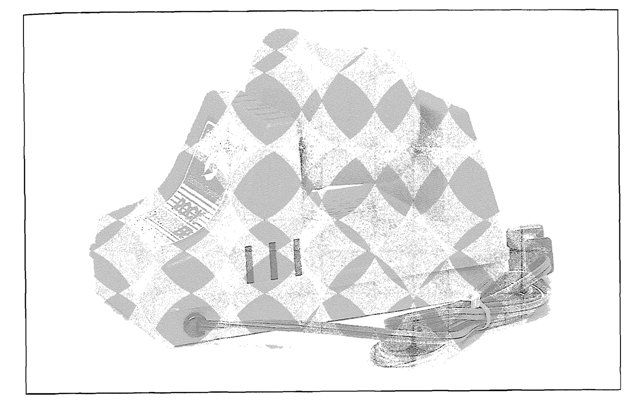
Figure 3-12. A “Rolling Stones” rock tumbler. As of 2002. it is made by Natural Sciences Industries Ltd. of Far Rockaway. New York. Small but effective, it makes 94 grams of propellant per batch. I bought this one new at Toys “R” Us. but look for them at yard sales for S10 or less. The top edge of the tumbler jar has some plastic mold marks that should be sanded off to make a better seal. Also, apply a light coating of Vaseline or grease to the lid’s rubber O-ring.
Referring back to Figure 3-10. you’ll find a complete list of the number of pellets, the total weight of the pellets, and the size of the pellets needed for each powder mill, and it’s probably not advisable to second guess these figures. To save a little money, you can try brass balls, or brass nuts or bolts from a scrap yard, and these things will work. But they will probably mix the propellant either slower or faster than the cylindrical pellets, and you’ll have to experiment with your milling times to match my results.
To specify an exact milling time and to turn the mill on and off on schedule, you’ll need a small appliance timer. Small appliance timers cost S5 to S10. They are used to turn the lights on and off when you’re not at home, and you’ll find them at hardware-lumber yards like Home Depot and Lowe’s, and big department stores like Kmart and Walmart. Look in the electrical or housewares department, or ask one of the clerks. Figure 3-13 shows a complete powder mill with the pellets, the open jar ready for the chemicals, and the motorized base plugged into the timer and ready to go.
Powder Mill Maintenance
To keep a mill running on time you have to keep it clean and lubricated. The motors that drive these mills use sleeve-type bearings. When the bearings dry out or get gummed up. the motors slow down, and that degrades the milling process. You must also keep a mill’s rollers clean and lubricated. These parts also use sleeve bearings that will drag on the motor and slow it down if they get dirty or dry.
Rubber and plastic drive belts stretch after a while, and it’s important to replace them when they wear out. At the time of this writing, the Lortone model QT-6. QT-66. and QT-12 machines use cogged, v-shaped timing belts that eliminate this problem, but many other brands use standard, rubber O-rings. If your mill doesn’t use a timing belt, you might be able to find one that fits. You can buy cogged timing belts from the places that sell pulleys, gears and bearings. Check The Yellow Pages under the GEARS and BEARINGS headings.
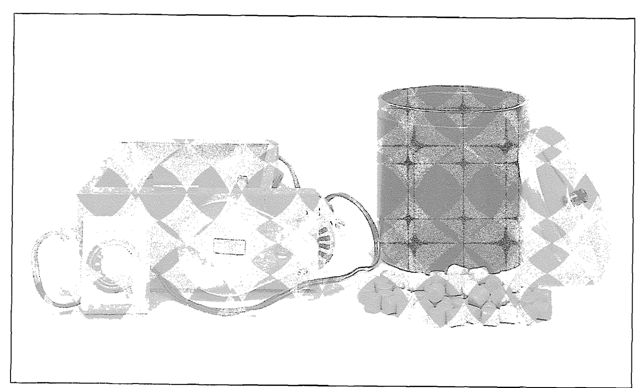
Figure 3-13. A complete powder mill setup with a rock tumbler, the tumbling pellets, and the timer, all plugged in and ready to go.
After years of operation, a Lortone mill’s rubber jar becomes hard and polished, and it starts to slip. The fix for the problem is fan belt dressing, and you can buy it at an auto parts store. The dressing that I use comes in a spray can. and I get it at Pep Boys. Unlike most brands, it’s a clear liquid (not black and sticky). I wipe the jar with a light coating, and let it dry for an hour. Special chemicals in the dressing soften the rubber and restore its natural gripping qualities.
If. after several treatments, you see a black, rubber residue sticking to the mill’s rollers, you can wipe it off with a rag soaked in acetone. But be careful not to wipe too vigorously or too long. Acetone softens the surface of the plastic from which the rollers are made. If you do this carelessly, you can damage them.
The brass pellets will last for many years, and they’ll clean themselves as they mix and grind the chemicals. But if you stop using the mill for any length of time, wash and dry the jar and the pellets before placing them in storage. If you don’t do this, in the presence of residual oxidizer, the pellets will develop a crusty, black oxide coating. To remove this coating, put the pellets back in the mill, fill the jar half full of water, add a handful of sand, and run themill for an hour. The sand will grind away the coating, and the pellets will come out clean.
Vacuum Pumps
Important note. You do not need a vacuum pump to make the rocket motors in this topic. All but 6 of these motors run on propellants that contain a glue called a “binder”. During the loading process you soften the binder with a small amount of solvent. Before a motor can be fired the solvent has to evaporate, and these motors will rapidly dry in open air. When acetone is used, the smallest take 12 hours, and the largest take 72. If you’re in a hurry, and you want to use a motor on the same day that you made it. you can reduce the drying time to as little as 20 minutes with a vacuum pump.
Important note. The pump you buy must be the high vacuum or refrigeration type. The diaphragm pumps and the combination compressor/vacuum pumps will not work.
Figure 3-14 is a photo of a small, belt-driven pump. It’s a Welch model 1400. and it’s typical of the small pumps used in chemistry and science labs. Figure 3-15 is a photo of a Lammert direct-drive pump. Direct-drive pumps are used in laboratories too. but because they are more compact, and therefore portable, they are also popular with the people who service air conditioners and refrigeration equipment.

Figure 3-14. A Welch model 1400 belt driven vacuum pump. The model 1400 costs SI.200 new. but I found this one. and an even bigger pump in a “leak detector” that I bought at an auction for $100.
New vacuum pumps are expensive. The year. 2000. W.W. Grainger Industrial Equipment catalogue lists a Welch 1400 for S1268.00. and Grainger’s equivalent of the Lammert costs S742. Grainger’s cheapest is a 3 cfm direct drive pump made by Dayton for S316.45. Grainger’s has more than 350 locations throughout the country, and as of this writing, they have a website on the Internet at www.grainger.com. If you live near a big city, you’ll probably find a Grainger outlet in the business section of the city’s phone topic. Grainger’s sells only to businesses, and not to the public. If you don’t own a business, find a friend who does, or see if the place where you work will deal with them for you. If you’re shopping for a new vacuum pump, get your first quote from Grainger’s. Then look in The Yellow Pages under VACUUM EQUIPMENT, and see if anyone can beat their price.
Fortunately there’s a large market in used vacuum pumps, and if you know how to shop, you can save a tremendous amount of money. Start by calling the people who service and repair vacuum pumps. Look in The Yellow Pages under headings like VACUUM EQUIPMENT, SERVICE & REPAIR. These places can often sell you a rebuilt pump for half the price of a new one. A friend of mine who repairs and installs vacuum pumps for a living tells me that the Welch and Kinney belt drive pumps are good, and among the direct drive pumps. Leybold-Hereaus and Trivac are the best.
For used pumps, check the industrial surplus stores and the Internet auction sites like www.ebay.com. Shops that are going out of business often sell pumps for 10 to 20 cents on the dollar. If you’re savvy about used scientific equipment, you can buy vacuum pumps for even less. Start attending aerospace and scientific equipment auctions, and look for a “vacuum station” or a “leak detector”. Both devices are about the size and shape of a washing machine, and unless they’ve been cannibalized, they’ll have at least one good pump inside. People who don’t know this often pass them up. The Welch pump in the photo came from a leak detector that had two pumps, and I paid S100 for the whole thing.
Important note. Many vacuum pumps have seals made of a rubber called “buna” (aka “nitrile”). Alcohol has no effect on buna, but acetone dissolves buna, so pumps with buna seals cannot be used to evaporate acetone. It is therefore important that, before you buy a pump, you read the rest of this topic, and decide which solvent you’re going to use. Motors made with acetone dry the fastest, but if you plan to use a vacuum pump, the pump’s seals must be made of a special rubber called “Viton”. Before you buy a pump, call the manufacturer, and verify that the seals are made of Viton. If they are not made of Viton. you’ll have to replace them. Anyone who works on vacuum pumps can do it for you. If you tell them that the pump will be used to evaporate acetone, they will immediately know what to do.
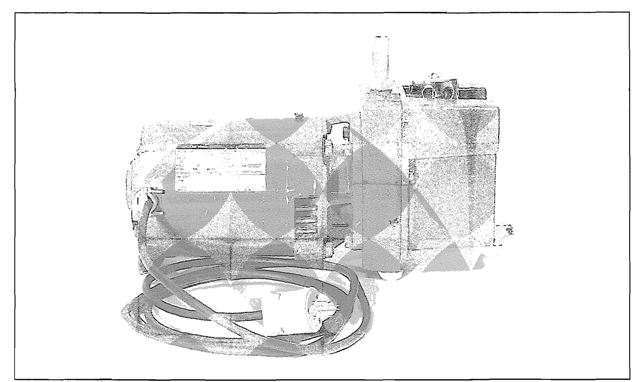
Figure 3-15. An example of a small, direct-drive vacuum pump. I bought it from a machine shop that was going out of business. This model is no longer made, and some of the parts are not available, but I paid just S35 for it. so it was still a good buy.
